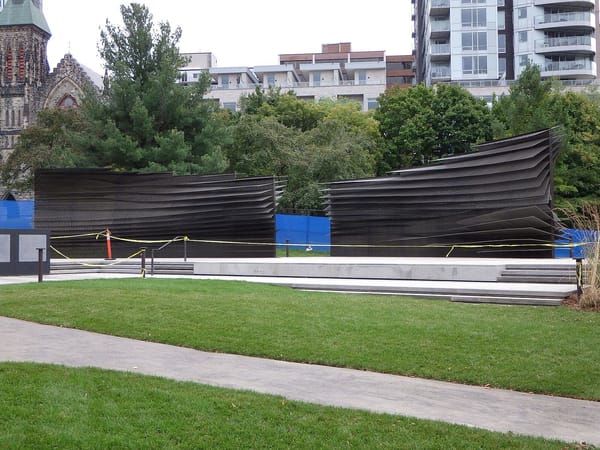More than half of all reported COVID-19-related deaths in Canada thus far have occurred in long-term care facilities and retirement residences. Every day, news of breakouts, under-staffed facilities and higher death tolls are laying bare a crisis within these institutions — a crisis workers and advocates have been sounding the alarm over for years.
Local public health agencies have been reporting the number of deaths in long-term care facilities, yet they’ve generally failed to note the specific residences impacted. One notable exception is the Waterloo Region’s Public Health agency in Ontario, which has been tracking how many residents and personnel have been infected or have died in each long-term care or retirement residence.
To get a better picture of just how many people have died in residential facilities — long-term care, retirement homes or jails — I created a database linking each death that occured within one of these facilities to its name, based on news reports, information from public health and press releases. There are currently more than 840 deaths recorded in the database.
The lack of officially compiled data has made it difficult for people to see just how dire the situation within these facilities has been. Yet the horrific discovery of what health professionals described as concentration camp-like conditions at the Herron seniors’ residence in Dorval, Que., put long-term care in the national spotlight. A police investigation found that as of April 12, 31 seniors at the residence had died. At least five of these deaths have thus far been confirmed as due to COVID-19.
Herron isn’t alone with such a high death count. As of April 16, the Pinecrest Nursing Home in Bobcaygeon, Ont., had reported the deaths of 29 residents due to COVID-19. As of April 20, the Eatonville Care Centre in Etobicoke, Ont., reported 33 deaths due to COVID-19.
Together, these three private, for profit facilities have had at least 93 deaths thus far.
While there have been more deaths in private care homes than public ones, public facilities have also been the sites of outbreaks, especially in Quebec. On April 13, Radio-Canada reported that 33 people have died at the Institut universitaire de gériatrie in Montreal since March 25, with a source telling them all but one were due to COVID-19. As of April 12, Toronto Public Health was aware of 22 COVID-19 related deaths at the Seven Oaks residence in Scarborough, Ont.
The long-term care network exists mostly outside of Canada’s public health system. Despite the fact that service within many of these facilities resembles hospital care, the system is dominated by private, for-profit providers. Like dental or pharmacare, it’s a glaring gap in Canada’s public healthcare system. Unsurprisingly, staff are underpaid and often must work at various locations to cobble together a paycheque. The public health facilities that exist are funded through stretched budgets; the rest are offered through cooperatives and not-for-profit private facilities and for-profit corporations.
In Ontario, Mike Harris’ Progressive Conservative government favoured building for-profit long-term care facility beds over public beds. Many of the companies who were given contracts were also big donors to the party. The Liberals, who were in power in the province from 2003 until 2018, did little to address the funding gaps and strain on the system.
Violence against workers increased, as did violence among residents. Between 2014 and 2019, 27 residents were murdered by other residents in Ontario facilities. One Ministry of Health report identified that residents have also likely died due to understaffing.
Heather Neiser, president of CUPE local 1404, a union representing staff at CAMA Woodlands Long Term Care Home in Burlington, Ont., told Rank and File journalist Zaid Noorsumar that the violence they’ve been experiencing is related to understaffing and underfunding.
“They’re getting violent because they have to go to the bathroom but there’s nobody there to take them to the bathroom,” Neiser said. “They’re getting violent because they’re in a wet brief or they’re hungry or they’re thirsty.”
Before the COVID-19 pandemic, many politicians were already aware that the situation in these facilities was dire. One of the Coalition Avenir Québec’s principal election promises in 2018 was to reform elder care, in part to ensure residents in these homes would have access to two baths per week. In February, Ontario Premier Doug Ford created a committee to investigate problems related to staffing in the province’s system.
Yet it’s clear politicians in each province failed to anticipate how these conditions would have such deadly consequences. Governments who worked to clear up and increase the number of ICU beds in the midst of the COVID-19 crisis obviously thought, likely based on their modeling and predictions, that the virus would send hundreds of people into intensive care. As such, rather than boosting resources for long-term care, they focused on the hospital system.
Nor did politicians and public health think through the consequences of some of their earlier measures. When many governments cancelled all visits to long-term care facilities, it meant that family members or personal support workers unaffiliated with the residence could no longer monitor people, or provide them care. Facilities have grown to rely on the help and care of family and friends, so when these visits were cancelled, an army of labour could no longer show up to work.
The tragedy is that while there has been an increase in ICU admissions, the majority of people are dying before they even make it there. Hundreds of long-term care residents have been abandoned by a system that was set up with cost, rather than care, as its principle driving factor.
Every Canadian should be doing what they can right now to improve these conditions. Whether that means signing up to help work in an understaffed facility or communicating with a local politician to demand long-term changes to this system, there are lives that depend on us correcting this collision course.







